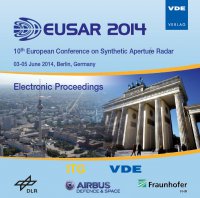CSG End-to-End System Deployment and Calibration within the Evolved Mission Scenario
Konferenz: EUSAR 2014 - 10th European Conference on Synthetic Aperture Radar
03.06.2014 - 05.06.2014 in Berlin, Germany
Tagungsband: EUSAR 2014
Seiten: 4Sprache: EnglischTyp: PDF
Persönliche VDE-Mitglieder erhalten auf diesen Artikel 10% Rabatt
Autoren:
Gallon, Andrea; Francioni, Andrea; Grimani, Valerio (Thales Alenia Spazio Italia, Italy)
Covello, Fabio (Agenzia Spaziale Italiana, Italy)
Serva, Stefano (SGD-DNA, Italy)
Inhalt:
COSMO-SkyMed Seconda Generazione (CSG) represents the follow-on mission of COSMO-SkyMed (CSK) currently operating with the full constellation in orbit, characterized by the capability to guarantee operational continuity and most of all improvements in terms of performances and architectural enhancements at both space segment and ground segment level. By exploiting the peculiar characteristics of flexibility and expandability of the CSK system, CSG will integrate innovative technological elements that will make possible new and more advanced civil and military applications [1]. The high Earth observation capability provided by CSG will fully meet the future needs of the entire country and will be shared by the Italian Defence with the European defense community in the frame of the "System of Systems" European agreements. The design of the new generation system is conducted on the basis of the experience of the first generation and is therefore upgraded and evolved in both architectural/operational design and logics of satellite and instrument management. The lesson learned and the new demanding needs of CSG mission in terms of image quality performances led also to the evolution of CSK Calibration and Validation functions and capabilities (CALVAL). The new SAR operative modes and performances, have driven the development of new image quality processors as well as the evolution of the existing algorithms. Accurate models of new passive calibrators have been developed with the aim to improve radiometric and geometric accuracies. The handling of higher data volume (e.g. dual polarization) and the generation of calibration tables to comply with new demanding requirements (e.g. geolocation) have been also challenging drivers of the new CALVAL design that will be in charge of all the verification, validation and certification activities. Objective of the paper is to present such concepts, highlighting the optimizations and upgrades that have been taken into account in the end-to-end design of the CSG mission with particular reference to the customer operational and certification needs.


